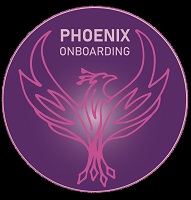 Embarking on a new executive role can be both exciting and challenging. As executives, directors, vice presidents, board members, CEOs, and HR leaders, you understand the criticality of a seamless onboarding process. In this article, we delve into the specific challenges that executives face during their onboarding journey, comparing them to the experiences of employees without leadership responsibilities. Additionally, we explore how specific AI tools can either hinder or help in overcoming these obstacles. Join us on a journey to empower executive onboarding for success.
Embarking on a new executive role can be both exciting and challenging. As executives, directors, vice presidents, board members, CEOs, and HR leaders, you understand the criticality of a seamless onboarding process. In this article, we delve into the specific challenges that executives face during their onboarding journey, comparing them to the experiences of employees without leadership responsibilities. Additionally, we explore how specific AI tools can either hinder or help in overcoming these obstacles. Join us on a journey to empower executive onboarding for success.
Some challenges:
Transitioning into a leadership role brings unique hurdles during the onboarding phase. The following table highlights the challenges faced by executives compared to non-leadership employees, along with the advantages and disadvantages of utilizing AI tools:

How to Harness AI for Effective Executive Onboarding…. Pro and Con…
Tools 1 – AI-Powered Leadership Assessment Tools: there is a range of tools that employ AI algorithms to conduct comprehensive assessments during the interview or pre-boarding phase. These tools provide insights into executives’ skills, experiences, and leadership styles, compare skills to requirements, analyse videos of interviews, conduct interviews etc. enabling personalized onboarding strategies tailored to individual needs.
However: We see this as a way to “shortlist” the number of standard candidates. The AI tool will only do this based on a set of pre-defined criteria which are average criteria. There is no chance to identify the brilliant mind, the curve ball, the outsider with outstanding experience and skill. At executive level we talk about hiring exceptional people who do not fit a standard career or an average set of scores… nothing replaces a 4h in person conversation with non standard questions to reveal if you are sitting opposite the exceptional person you are looking for the unique challenges of the company.
Tools 2 – AI-Driven Coaching and Mentoring Platforms: there are AI-driven products out there that search and match mentors and mentees, show similarities and differences between candidates, to offer personalized recommendations, resources, and feedback. These tools provide executives with tailored guidance, empowering their growth and development.
However: it may speed up the matching process but as we know from dating shows, not even experts or AI can help it if there is no chemistry between the candidates. You might be better off with a pool of coaches and mentors and just assign them…
Tool 3 – Immersive Virtual Onboarding Platforms: Design immersive virtual onboarding experiences using platforms that utilize AI-driven simulations, virtual reality experiences, and interactive modules. These tools create hands-on learning environments, fostering a deep understanding of the organization and its strategic initiatives.
However: as usual it’s a very costly and complex effort to set this up in the first place, only as good as the content that is created and always at danger of being outdated…
Tool 4 – AI-Enhanced Networking and Relationship Building: AI tools can analyze organizational networks, identify key stakeholders, and facilitate effective engagement. These tools assist executives in establishing valuable relationships and collaborations from the onset.
However: You don´t actually need AI based tools to identify the key stakeholders you should engage with before day 1, on day 1 and during the first 30 days.
By balancing the advantages and disadvantages of specific AI tools in executive onboarding, organizations may be able to navigate the challenges effectively. AI tools offer valuable insights, personalized support, and data-driven decision-making capabilities. When used alongside human expertise, they contribute to the successful integration of executives into the organization.
AI can help to point you in the right direction but it won´t ensure success in the new role an executive takes. It still applies that you have to be able to have a vision, to strategize, build a better than average team and engage people. Emotional intelligence, empathy, a feeling for the tension in the room when you sit with your team round the table. A feeling for when to kick butt vs when to coach, a feeling for how to negotiate deals and take calculated risks, how to make sense of complex situations. A feeling for 80% is good enough vs let´s be 110% accurate on this. And how to come across authentically…
Humans have a built in detector – it is embedded in our unconscious mind … we cannot help it, it is just there, and the mind will activate it. It allows us to know in a second if a leader is authentic and believes in what they talk about or not. There is no app for that – humans feel it and decide to follow a leader or not.
In the end you are only a leader when people follow you voluntarily.
Ready to empower your executive onboarding process?
Stay informed about the latest advancements and application in leadership development. Follow me for more cutting-edge content and elevate your executive onboarding strategies.
#ExecutiveOnboarding #AIinLeadership #EmpowerExecutives #LeadershipDevelopment #AIAdvantages #AIDisadvantages #HRLeadership #UnlockPotential #Leadership #ExecutiveCoaching

